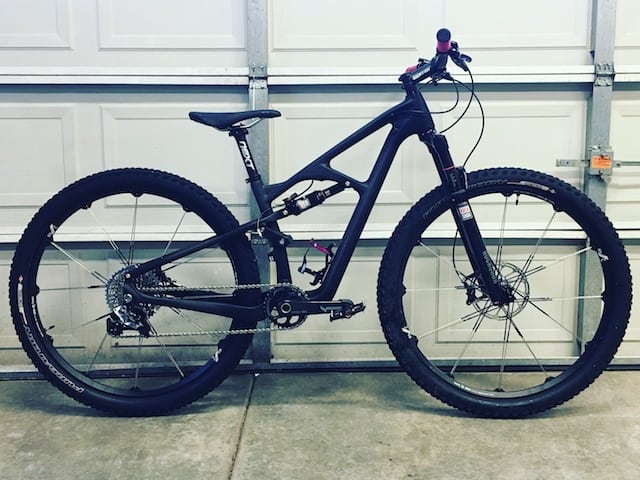You can find this frame several places online. It is the Carbon 29er FM-DH098 frame. I was intrigued by this frame. It didn’t cost very much (approx. $600). The geometry seemed good for a cross-country bike. And it was fairly light weight (approx. 1900 grams).
So here are the questions I want to answer with a test build: Is it cost effective? Could I build this bike for substantially less then buying something comparable at a bike shop? How is the quality of the frame? How many seasons would this bike build last? And lastly how does would this bike built perform?
- Steps to test build:Find a users/rider
-
- Create a build sheet (virtual build)
-
- Source the parts
-
- Build the bike
-
- Evaluate
Step 1 – Find a rider to test this build. I have a friend whom is willing to test ride the bike, and even pay for the build if she gets to keep the bike. Without a rider it will be impossible to actually evaluate the performance of this project.
Step 2 – Creating a build sheet is simple. I outline all the items needed for the test build. There is special consideration needed in this step. Parts are often times dependent on each other. For example I need to make sure to get a bottom bracket that matches the frame bottom bracket style.
Build Sheet |
|
| Description | Price |
| SRAM X.01 Groupset | $650.00 |
| FM-DH098 Frame | $600.00 |
| 120mm Front RockShox SID | $570.00 |
| Crank Brothers Cobalt 2 Wheelset | $500.00 |
| Race Face Next Handlebars | $119.00 |
| Race Face Next Seatpost | $110.00 |
| 95mm Syncros Stem | $19.00 |
| 185mm SRAM Centerline Rotor | $37.00 |
| 160mm SRAM Centerline Rotor | $32.00 |
| Purgatory GRID Tire | $60.00 |
| Purgatory GRID Tire | $60.00 |
| Race Face Love Grips | $24.00 |
| RockShox Monarch Rear Shock | $300.00 |
| Myth Comp Seat | $100.00 |
| FSA Headset Plug | $10.95 |
| SRAM GXP Bottom Bracket | $30.00 |
| Total | $3,221.95 |
Step 3 – Lets order the parts! I’m keeping in mind cost. Remember one of the questions I’m trying to answer is “Is it cost effective?” I need to find the best deals I can, even if that means longer shipping times. Time is not a consideration in this test build. So if it takes one month to ship, so be it.
Step 4 – I love to build bikes. I find it incredibly relaxing and gratifying. I have most of the tools needed. But I also understand I can’t scale. So even-though I will be building this test bike, I will account for what building costs. I asked a couple of shops near me, a full bike build price ranges between $50-$75.
Step 5 – Evaluate this test build has a couple of consideration. It can be summed up as, “does the performance justify the cost.” This requires an evaluation of the bike performance. As well as the cost of the bike.
Comparables |
||
| Bike Models | Weight | Cost |
| This Test Build | 24lbs. | $3,300 |
| 2017 Specialize Epic Pro | 27lbs. | $6,500 |
| 2017 Scalpel-si Carbon | 25lbs. | $4,200 |
| 2017 Scott Spark 930 Carbon | 27.5lbs. | $4,200 |
Conclusion – Based on what I know today, I’d say this is a successful test. The feedback from the test rider has been positive. The geometry is good. The carbon build quality of the frame is good. Time will tell if the bike will hold up over several seasons. The total build weight is better then other comparable bikes in its class. Lastly the price is good. It costs nearly $1,000 less then other bikes with similar specs.
I’ve always had a passion for solving complex problems, but I’ve never liked to do it the “normal” way. The digital product space is still the Wild West of technology, a place you can imagine an idea, prototype it quickly and cheaply, and bring it to market on your own (or at least with a small, tight team). There’s an ethos you have to follow, sure, but how you do it isn’t as important as that you get it done. I’m a huge advocate for renegade product makers out to change the world.
